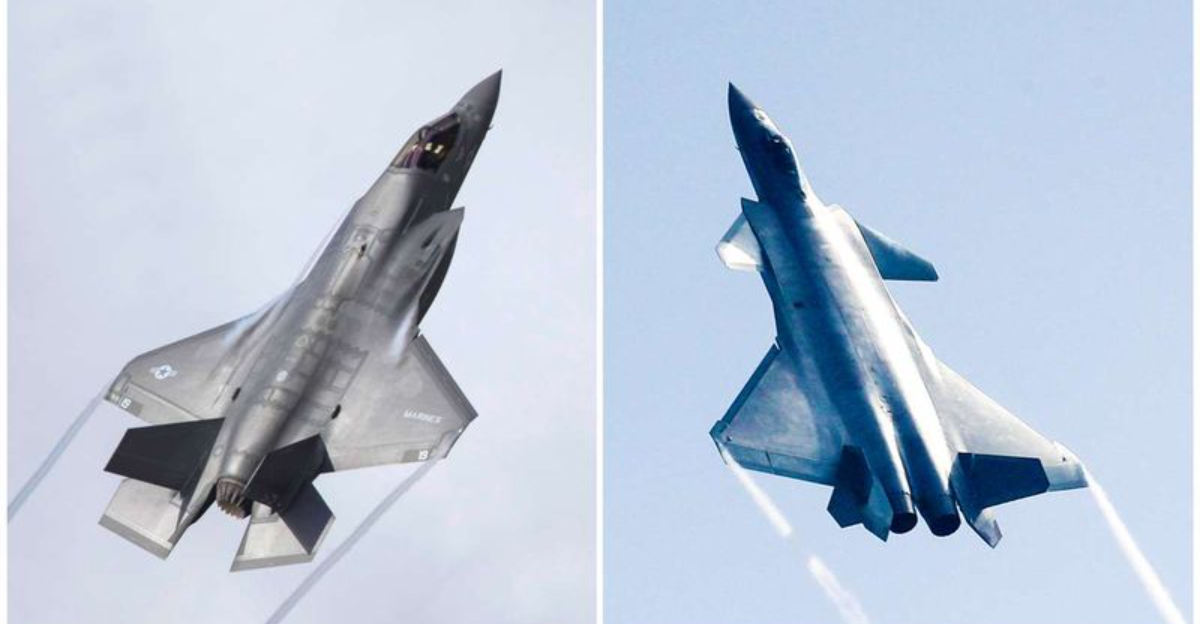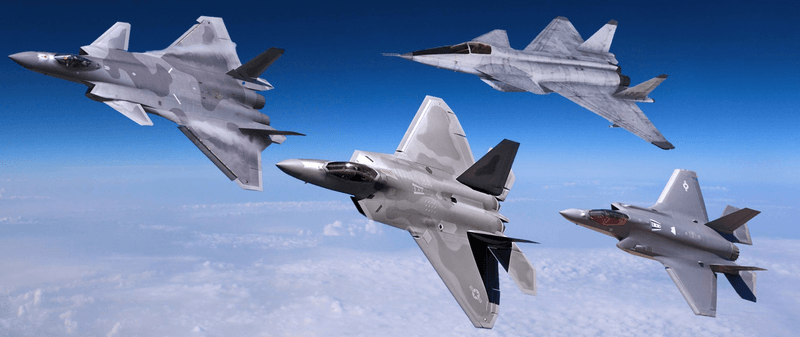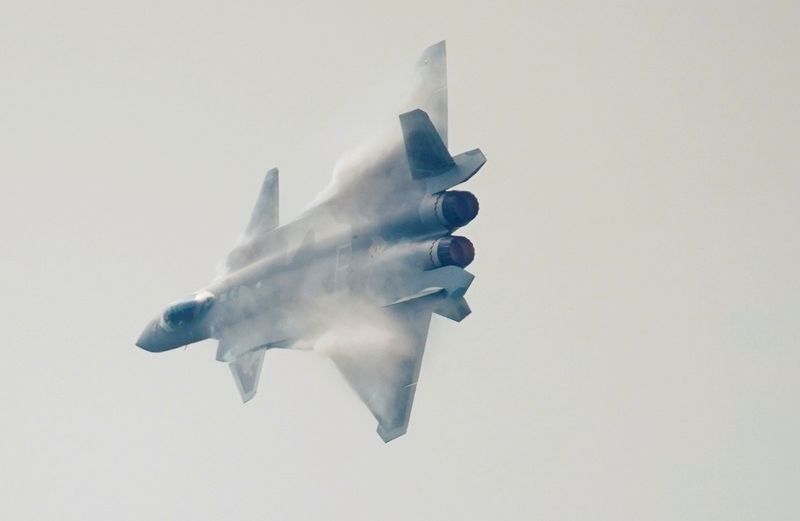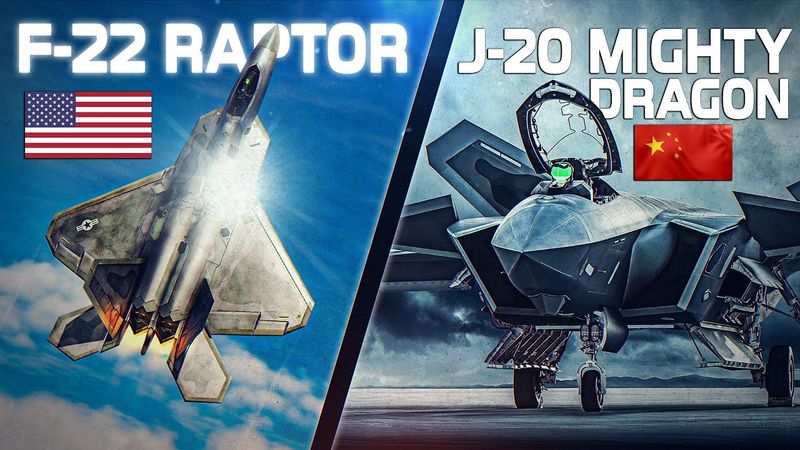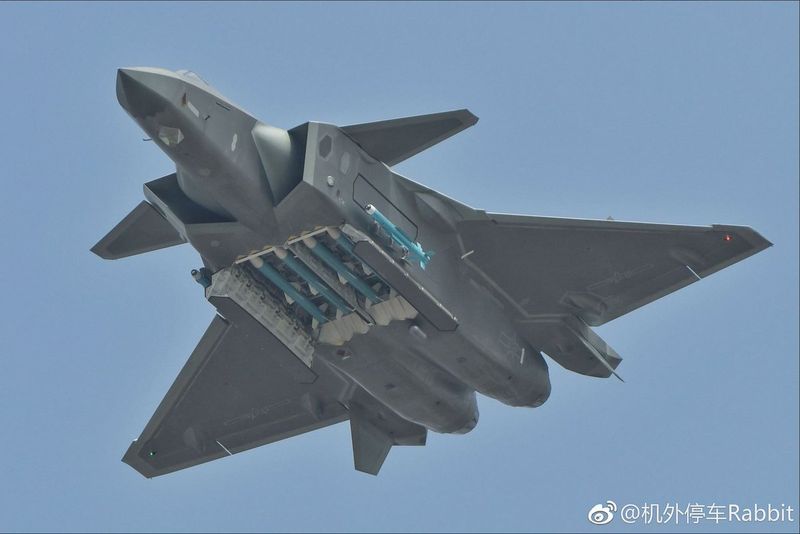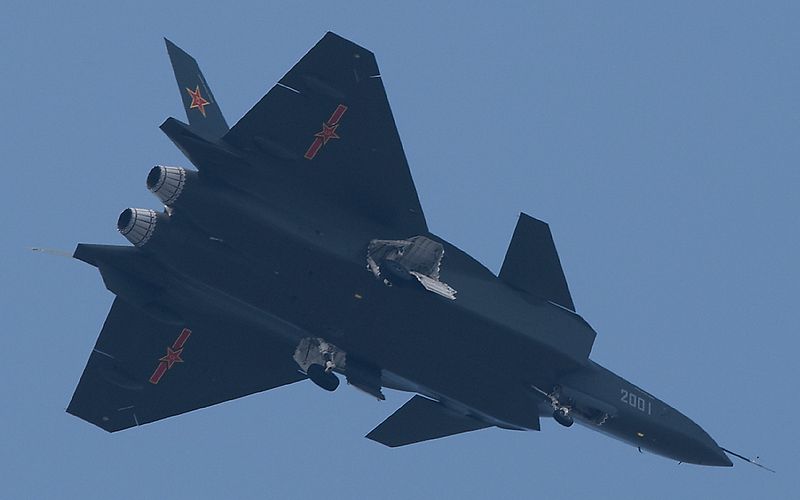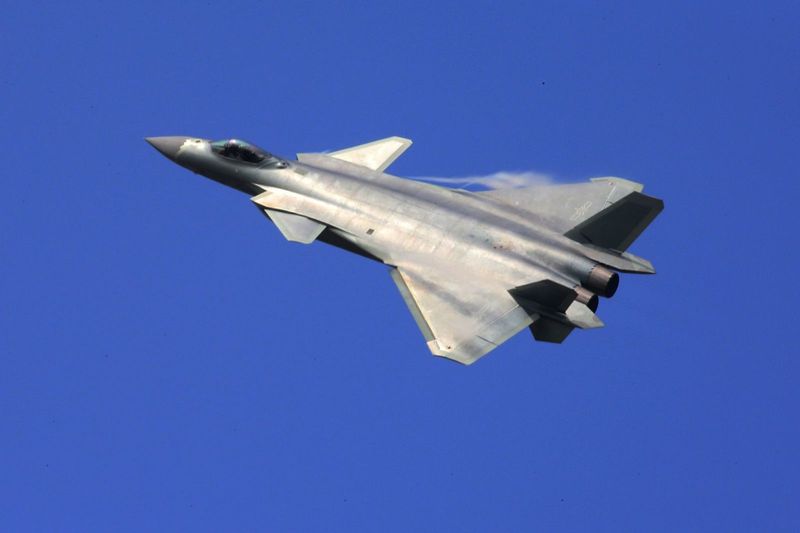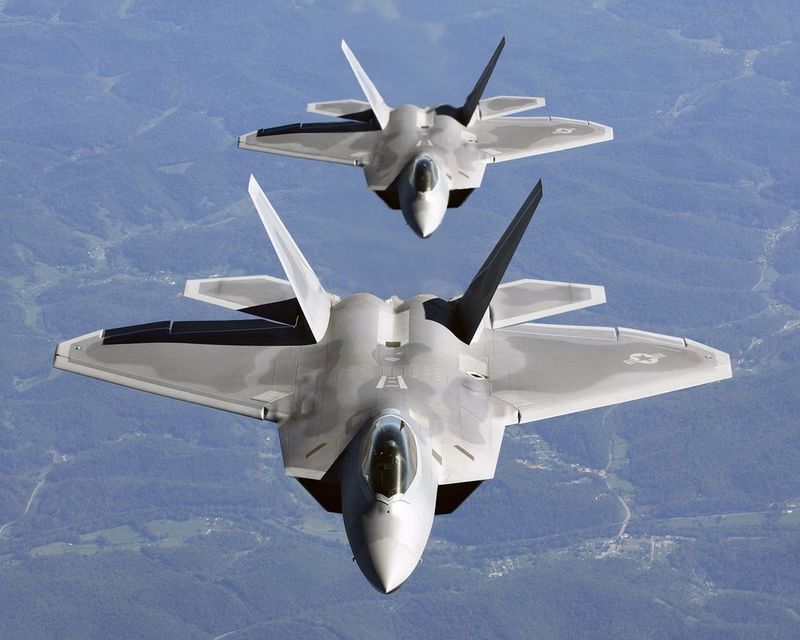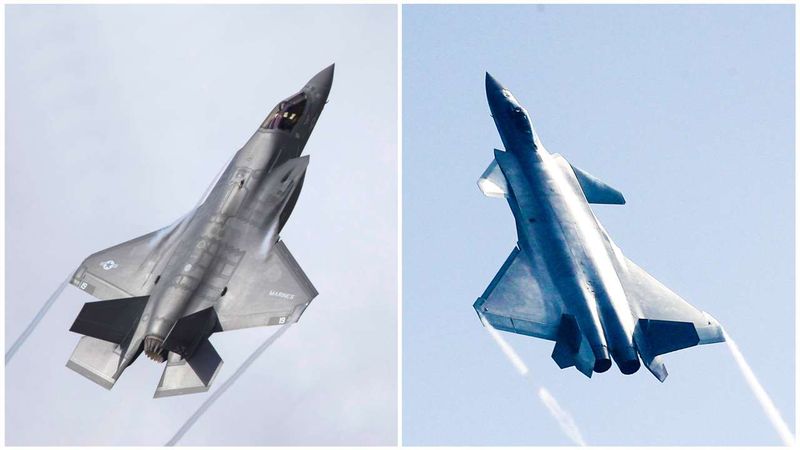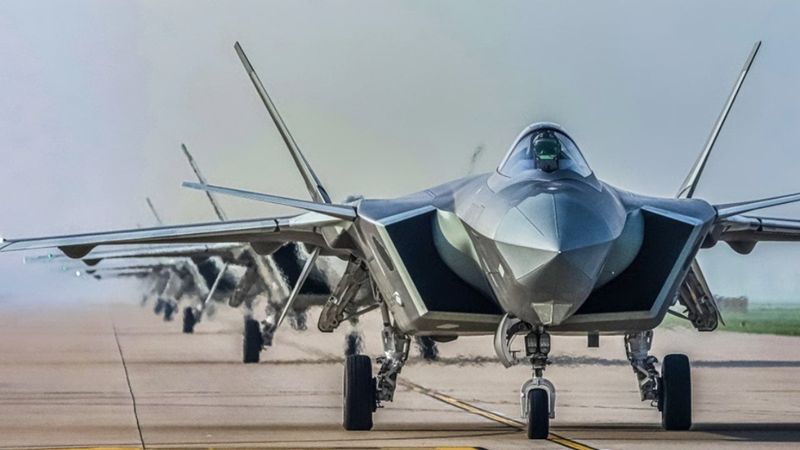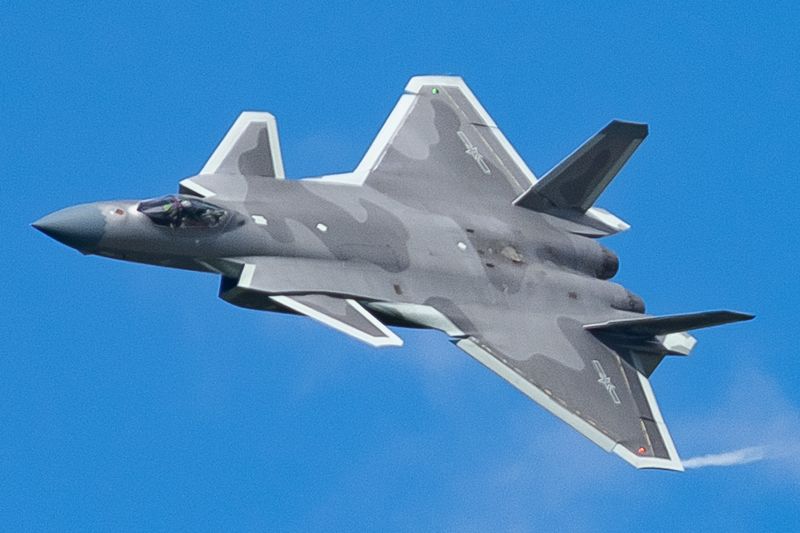The skies are getting crowded with cutting-edge stealth jets—but two names always rise to the top: China’s Chengdu J-20 and America’s Lockheed Martin F-22 Raptor. These two fifth-generation fighters represent the pinnacle of aerial warfare—but how do they really compare? Here are 10 eye-opening facts you probably never knew about this high-stakes jet rivalry.
1. The F-22 Was Built to Win Cold Wars—The J-20 Was Built to Fight Them
The F-22 Raptor was conceived during the 1990s, a time when the U.S. anticipated facing Soviet adversaries that never materialized. Its primary mission: achieving air superiority. Fast forward to the 2000s, the Chengdu J-20 was developed with a clear mission in mind—to counter the advanced capabilities of the F-22 and F-35.
China’s strategic response to modern U.S. air power has led to a unique design philosophy. The J-20’s inception highlights a shift in focus from the Cold War era to contemporary geopolitical challenges.
2. The J-20’s Design May Have Borrowed from American Tech
Rumors and speculations abound regarding the J-20’s design origins. Analysts suggest that the stealth technology underpinning this jet might have roots in cyber espionage. Observers note the striking similarities in radar shaping and the use of canards, which seem influenced by Western defense platforms.
This revelation has ignited debates on originality and innovation within aerospace circles. Despite the controversies, the J-20 stands as a testament to China’s ability to integrate and possibly innovate upon borrowed technology.
3. The F-22 Is Still More Agile—But the J-20 Might Out-Range It
In the realm of close-quarters combat, the F-22 Raptor reigns supreme. Its thrust-vectoring engines ensure unmatched agility, making it a formidable opponent in dogfights. However, the J-20 brings a different strength to the table—a presumed longer range and greater fuel capacity.
Built with extended missions in mind, the J-20 is well-suited for long-distance operations across the Pacific. This contrast underscores the varying strategic doctrines of the two nations, blending agility with reach.
4. One Jet Is Actually in Production—The Other Isn’t
While the F-22 Raptor is an engineering marvel, its production was halted in 2011 after only 187 units were made. This decision left the U.S. with a limited fleet. Across the Pacific, China continues to produce the J-20 in substantial numbers, with at least 200 already in service.
The ongoing production of the J-20 gives China a numerical edge. The decision to cease F-22 production remains a topic of debate among defense experts, weighing quality against quantity.
5. The J-20 Is Bigger—and That’s By Design
The J-20’s imposing size is not a mere coincidence. With a longer fuselage and expansive wingspan, it’s built for more than just agility. China has crafted this fighter to prioritize range and payload capacity, aiming to strike high-value targets from a distance.
This design philosophy reflects a strategic shift towards long-range engagements rather than traditional dogfighting. The J-20’s size is a deliberate choice, echoing China’s evolving aerial warfare tactics in the region.
6. U.S. Pilots Have Already Seen the J-20 in Action
Encounters between U.S. pilots and the J-20 have already unfolded over the South China Sea. In 2022, these intercepts provided rare opportunities for the U.S. to witness the J-20’s capabilities firsthand.
These sightings were not just exercises; they demonstrated China’s willingness to assert its stealth prowess in real-world situations. Such encounters heighten the stakes, turning theoretical rivalries into tangible confrontations in the skies.
7. The F-22 Has Never Fired a Shot in Anger Against Another Jet
Despite its advanced capabilities, the F-22 Raptor has never engaged in a traditional air-to-air battle. Its deployments have predominantly involved airspace policing and roles in low-risk environments.
The absence of combat against peer adversaries means its true potential remains untested. This fact adds an intriguing dimension to its legacy—a fighter built for conflict that has yet to unleash its full power in battle.
8. The J-20 Still Lags in Engine Technology
The heart of any fighter jet lies in its engine technology. The J-20, powered by the WS-10C engines, represents a leap for China, yet it falls short of the F-22’s Pratt & Whitney F119 engines.
The capability for supercruise, sustained supersonic flight without afterburners, remains an advantage held by the F-22. This technological gap highlights the ongoing competition in achieving superior stealth and speed.
9. Radar vs. Radar: Stealth Is Still King
Both the J-20 and F-22 are crafted to evade radar detection, yet differences exist. U.S.-developed radar-absorbing materials (RAM) are often considered more advanced.
However, China is exploring new avenues, such as quantum radar and AI-driven systems, to close this gap. The continuous evolution of radar technology means the stealth showdown remains an ever-changing battlefield.
10. This Rivalry Isn’t Just About Jets—it’s About Global Power
At its core, the J-20 versus F-22 rivalry extends beyond technology. It represents broader geopolitical dynamics, particularly in the Indo-Pacific region.
As tensions escalate over Taiwan and the South China Sea, the rivalry highlights strategic ambitions on a global scale. The future may see this competition influence not only air superiority but also international power structures.
